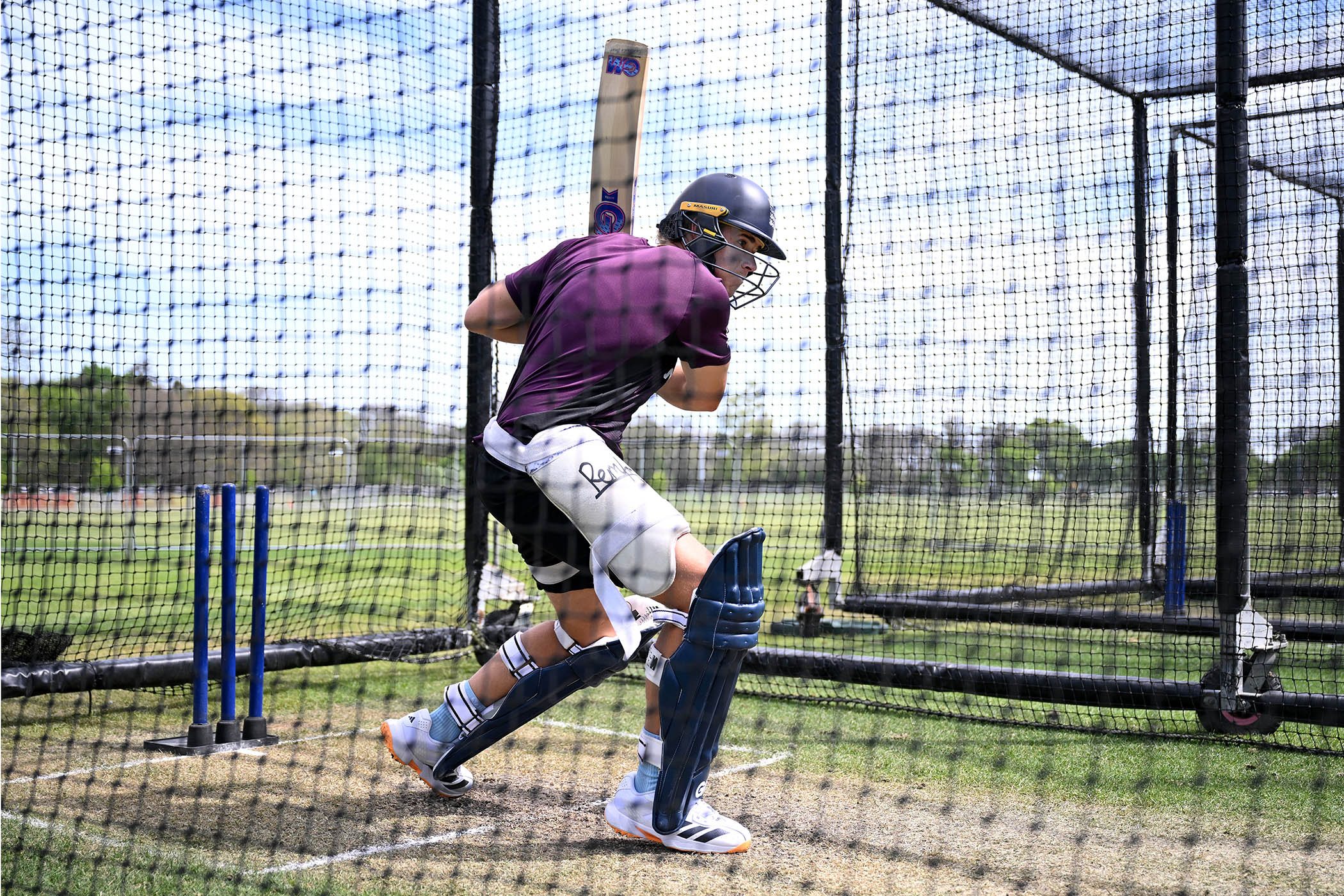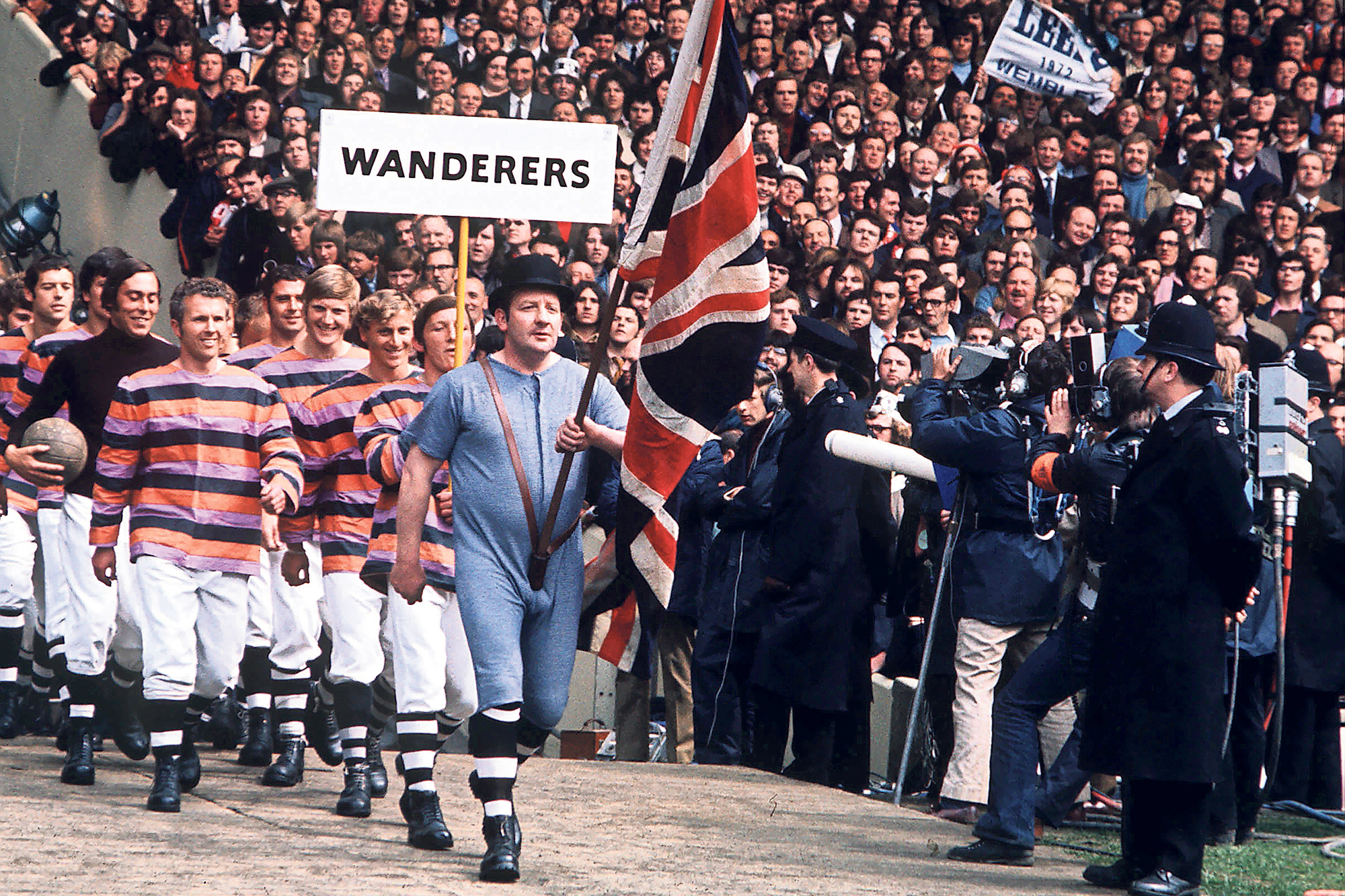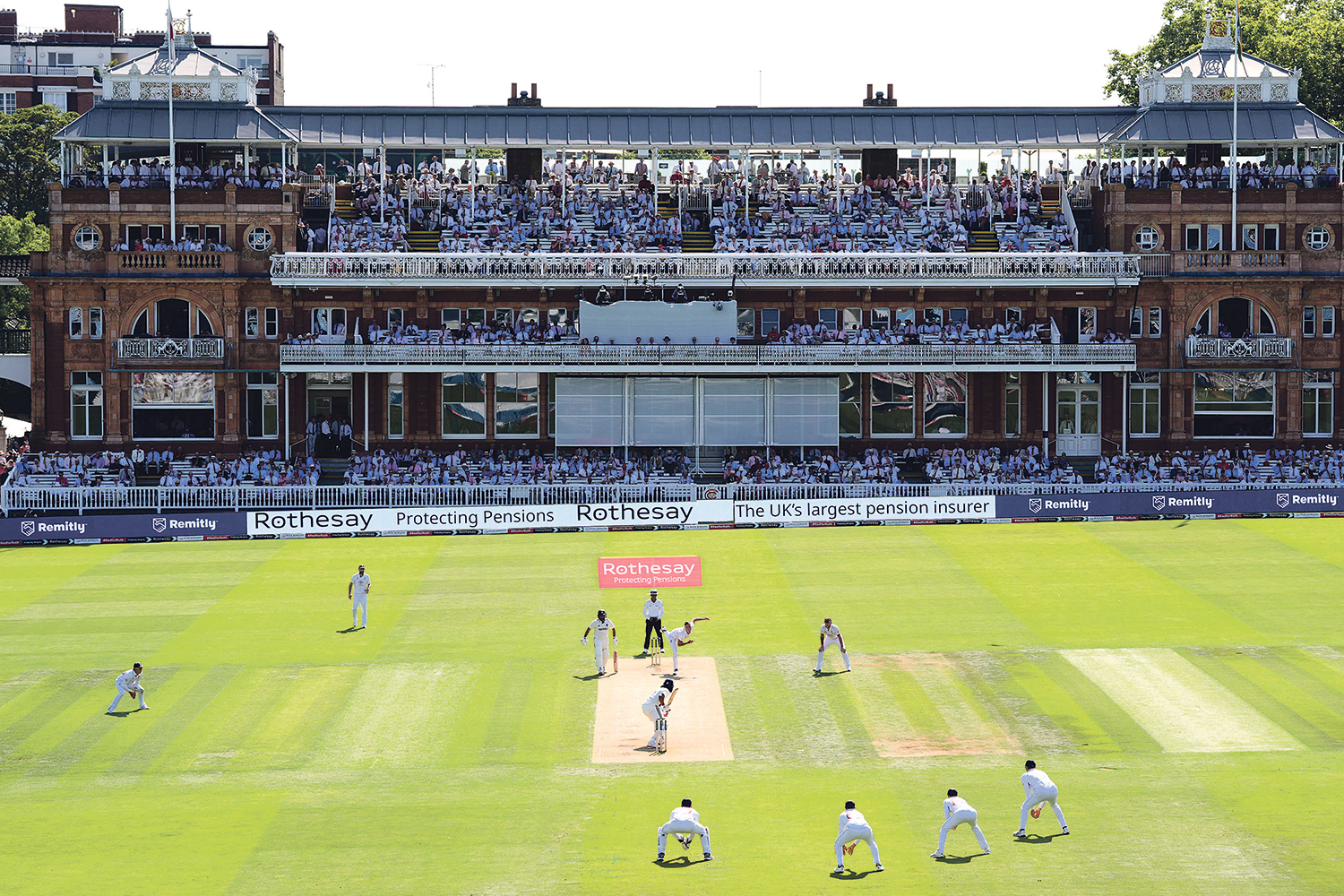
Mystery and history mean seeing the Test here may just be English sport’s best fixture
High summer at Lord’s, and 30,000 people are slow-broiling by choice. Jofra Archer glides across a verdant tapestry as though unburdened by gravity or reality. Archer bowling is one of the great aesthetic pleasures in sport; the frolicking chain, the effortless violence of his guillotine action, the nefarious grin as he concocts 47 different ways to break you. He wears a watch while he plays simply because he thinks it looks cool. He’s right.
Whatever comes next, the euphoric catharsis of Archer’s first Test wicket in 1,598 days, a Friday afternoon rhapsody of renewed possibility, might be the pinnacle of the English sporting summer. The silent nanosecond when only he realises it’s happened. The irrepressible fist-pumping joy as he sprints into Shoaib Bashir like a child who has just spotted a labrador. The feeling that everything might be all right after all. Ecstasy. Contentment. Hope.
Time has its own rules and rhythm at Lord’s, a world entirely walled off from real cricket and real England and real life by its haughty exceptionalism, its interminable love affair with its past and self-styled significance. Hours can pass as minutes, minutes as hours, a tableau of comforting shapes, lengthening shadows and still silence. For what could be days, Nasser Hussain pontificates about high elbows and Dukes balls. Kumar Sangakkara references Blackadder and The Two Ronnies. Harry Brook stretches and Brydon Carse shadow-bowls. There are no half-time shows or historic car displays, no music, just the hum and thrum of respectful murmuring and moaning. And yet this long, loping July weekend in a North London heterotopia might be the best ticket in English sport.
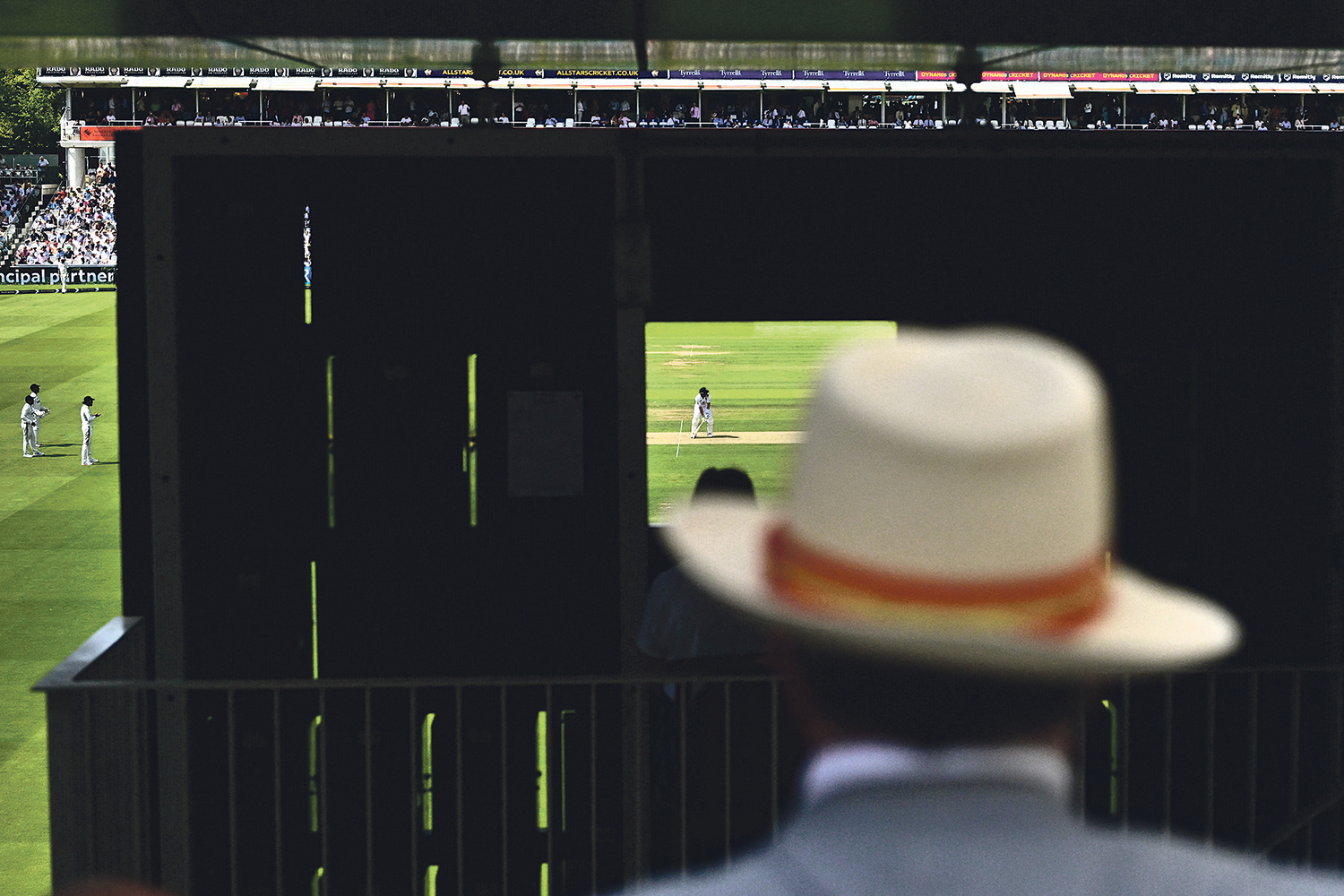
Ben Stansall/AFP via Getty/Bradley Collyer/PA Wire
Take Friday. Joe Root reached his century with the first ball. Jasprit Bumrah, statistically and actually the best fast bowler ever, then bowls two devastating sessions, clean bowling Root, Ben Stokes and Archer. Jamie Smith, Yashasvi Jaiswal and Shubman Gill, three batters likely to define the next cricketing decade, then bat with varying levels of success. Stuart Broad called it “the perfect day”. As the sun glints off a turf so pristine it is almost glassy, maybe he’s right.
Tickets are more expensive than they should be (£120 to £175 daily), but cheaper and more accessible than Wimbledon’s Centre Court, or even Silverstone last weekend. This is the most expensive of the five men’s Tests against India, but people are clearly willing to pay a premium just for the privilege of watching cricket here, one of the most impressive branding successes in a sport famously terrible at selling itself. The first four days sold out almost instantly.
Related articles:
Of course, the sheer Lord’s-ness of it all seeps into everything. The Pavilion still hosts row upon row of Châteauneuf-du-Pape-stained men patiently waiting to die. In a rare mercy, the Marylebone Cricket Club (MCC) has permitted members to remove their jackets, but plenty choose not to. It just wouldn’t seem right. Even in desiccating heat, the plummy and gummy consider wearing shorts in public only mildly preferable to full-frontal nudity, a sign of not only physical but moral fragility. Brewdog are an oddly fitting new partner, a thoroughly un-punk brand selling Punk IPA for £7.80 a pint to people who think punk is either a crime or a fish. Consulting bros and marketing girlies mingle, a mishmash of sundresses and aviators, the future of an institution which prefers not to acknowledge the future at all.
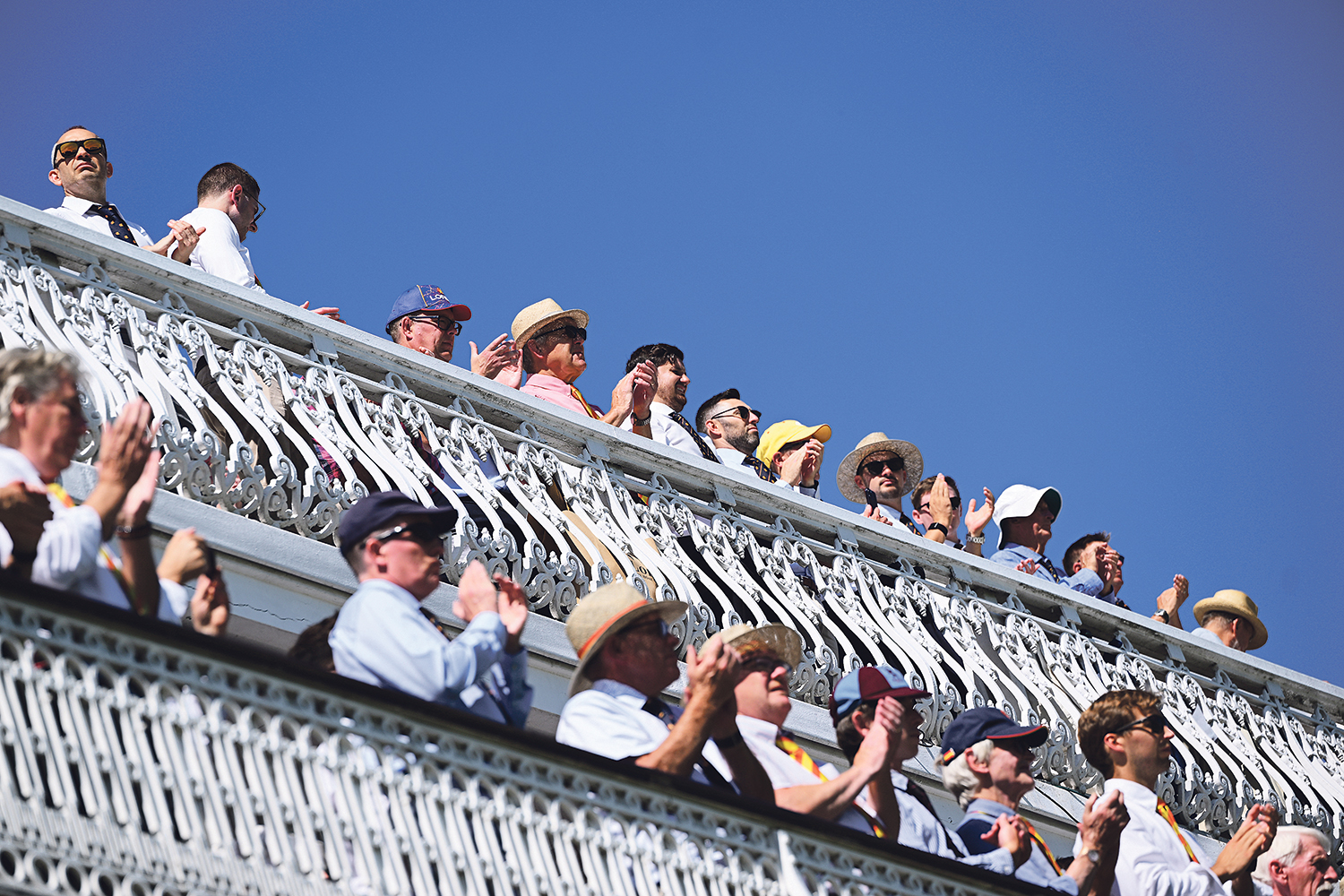
Stu Forster/Getty/Ben Stansall/AFP via Getty
But among all these carefully cultivated anachronisms, what does Lord’s stand for in 2025?
What does it mean to be the “Home of Cricket”? Can or should a sport have a home at all?
Interviewed in the programme for this Test, ECB chairman Richard Thompson said: “London is the Test cricket capital of the world, and we are the epicentre for Test cricket globally.”
This might sound ridiculous. General estimates suggest 70-80% of cricket’s income is generated by India, and ICC chairman Jay Shah and CEO Sanjog Gupta are both Indian. The Indian Premier League is the biggest revenue creator and eyeball attractor. The majority of investors in The Hundred were Indian conglomerates or consortia.
But a month ago, Lord’s hosted the World Test Championship final between Australia and South Africa. Each of the four days sold out.
Would any other country have been able to sell over 30,000 tickets for a one-off cricket match not involving them? It seems unlikely. Shah – who featured in the ICC’s later-deleted post-Test video as many times as the victors – is keen to move the WTC final away from England. No prizes for guessing his preferred destination.
It would be easy to just equate Lord’s with its owners, the MCC – as former chairman Stephen Fry put it, “beetroot-coloured gentleman in yellow-and-orange blazers sitting in this space in front of the Long Room and looking as if they’d come out of an Edwardian cartoon.”
Women are just 3% of the MCC’s 18,000-strong membership, with its infamous 29-year waiting list. As of 2021, 95-96% were white. There remain elements of the worst of English cricket between the Pavilion’s two ochre towers.
But across the stands and gardens, you can witness elements of the best. For all Test cricket needs to evolve, it must also maintain mystery and magic.
On days like these, Lord’s encapsulates that better than anywhere else.
MCC chairman Mark Nicholas said recently Lord’s is not “the Augusta of cricket”, but it is, whether it likes it or not. What Nicholas and the MCC can control is what being the Augusta of cricket, being the Home of Cricket, looks like.
It is possible to create a space that feels welcoming and exclusive to everyone in equal part, where the exclusivity is derived not from discrimination but from an untouchable and unknowable magic and history.
The MCC must do whatever it can to better foster that balance.
Thanks to a members’ revolt led by Henry Blofeld, Lord’s still hosts the annual Eton-Harrow match, but from next year will host the Knight-Stokes Cup finals day, a national U15 state school competition, partially funded by the MCC Foundation.
Across the summer, it will host this Test, men’s and women’s ODIs, the Hundred final and a men’s mixed disability match. A first women’s Test will be played here next year. This is still England’s most significant cricket ground, a monument to extremes of imperial legacy and one strand of divided modern Englishness. Perhaps, as with the nation around it, Lord’s clings on quite so tightly to its past because it knows it has much less control of its future.
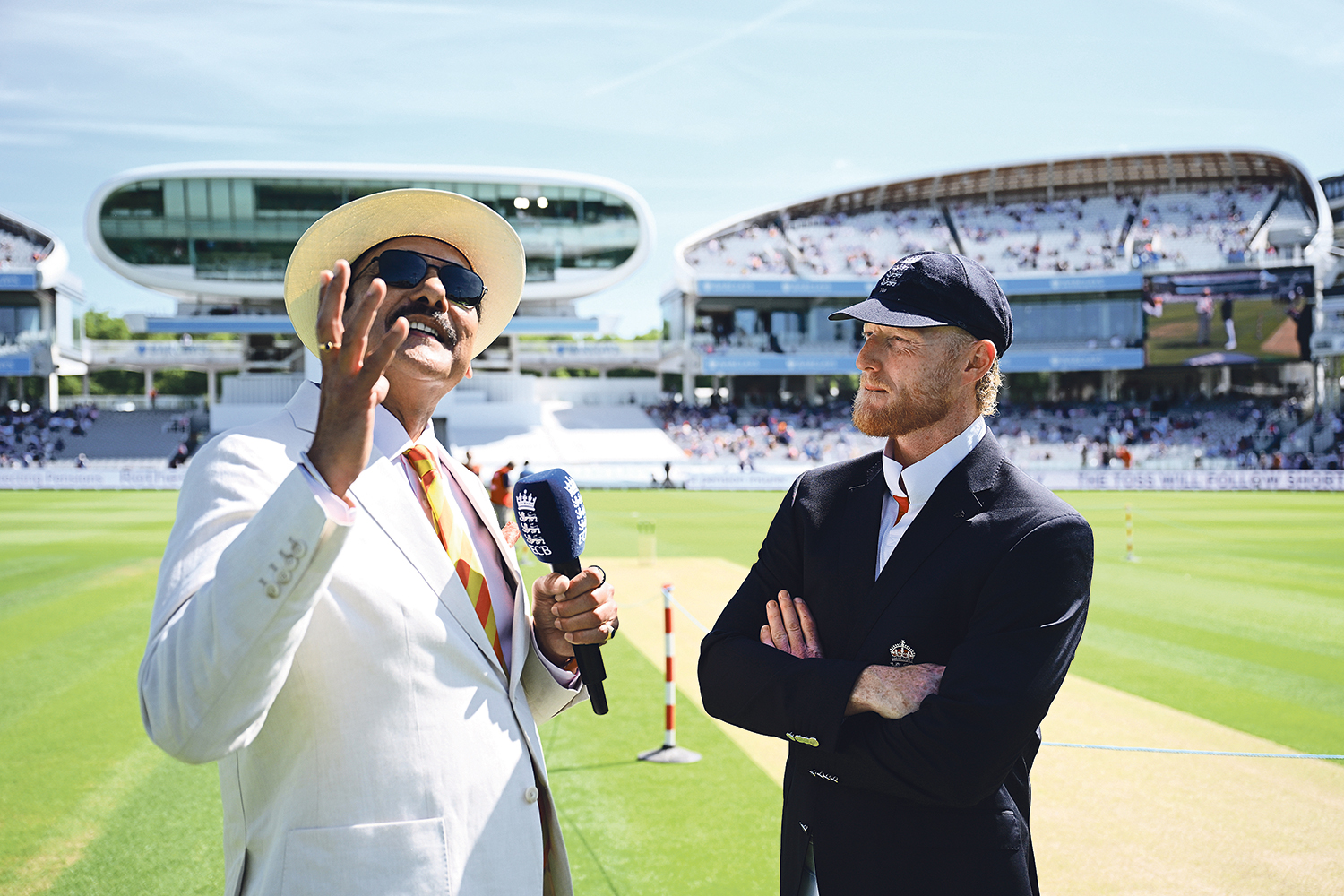
Gareth Copley – ECB/ECB via Getty
And yet maybe a day at Lord’s is not really about the sport at all. Sporting fandom is a construct fabricated to create artificial communities, to allow people to come together and belong, to experience and express emotions in a socially acceptable setting. Of course you come here for the cricket.
But ask fans around the ground why they are here, and they will often start by telling you who they came with and why they watch cricket together. Fathers and sons, mothers and daughters, husbands and wives, boyfriends, girlfriends, old friends. This is Cricket, Actually.
Lord’s Father Time Wall has plaques to Royal visits and grand memories, but also quiet proclamations of love and meaning. “Paul Venables, Sam Harrow, Happy Days,” reads one. “Kate Lund – to our yearly tradition”. “Rob Hastings-Trew, thank you for my love of cricket. James”. Amid the jowly frowns and imposed sobriety, these silent connections are the most meaningful currency and history of this place. As Friday’s play trundled to a close, a sozzled man in his mid-30s spotted his friend across the concourse. Wielding an overpriced ice cream like a lightsaber, he jogged over and launched into a bear-hug, holding him close for longer, and more tenderly than you might imagine.
Outsiders will often poke fun at those who seemingly pay hundreds of pounds to spend hours in the various gardens and bars around the ground, spreadeagled across beanbags and benches. But a GQ article earlier this year bemoaned the death of “hanging out” in place of “catching up”, of structured, short-burst socialisation which becomes something of a chore.
The chance to spend an uninterrupted day with people you love, especially for male friends or relatives, is vanishingly rare. You need an excuse, a façade, to facilitate and justify being together. There are few better or more beautiful places to just hang out, to let time and conversation meander, than a Test day at Lord’s.
The match’s underlying drama revolves around slow over rates – just 22 were bowled before lunch on Friday, and time was called 15 overs short on day two. Yet pundits always make this more of an issue than it ever really is to paying punters.
In the Coronation Garden, a fresco of blankets and hampers and half-eaten charcuterie boards, a blazered man in his 40s informs his father the last over of the day is being bowled. “It should go on until 7.30,” comes the reply. He never clarifies whether this is for the game’s sake, or for another hour with his son.
Photograph by Bradley Collyer/PA Wire



